KSysGuard
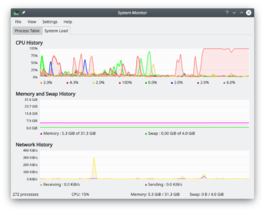 |
Suivez et contrôlez les processus en cours sur votre système. |
Général
KSysGuard, aussi connue sous le nom de KDE System Guard et Moniteur du système de KDE, est conçu pour permettre à l'utilisateur un contrôle simple des processus sans avoir besoin de configurer quoi que ce soit de particulier -la configuration par défaut étant généralement satisfaisante. Il y a deux onglets - la page , voir l'image ci-dessus, et la .
System Load
The screen has three displays, each representing one of the load considerations - CPU History, Memory and Swap History and Network History. If you hover over the title-bar of each section you will see detailed analysis together with a colour-key.
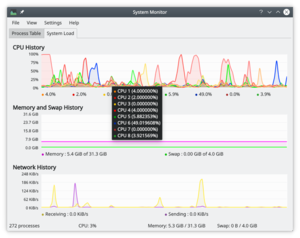 |
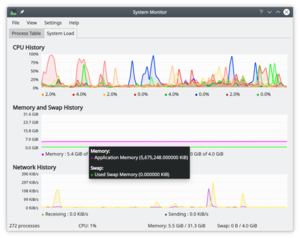 |
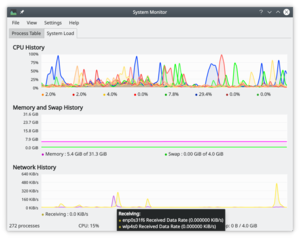 |
The Process Table
The view by default gives you an alphabetical order list of all processes running. Clicking on any column header will make this the sort column. If you have a runaway process you will find the view most useful. You can also elect to see sub-sets of the processes, by owner or program.
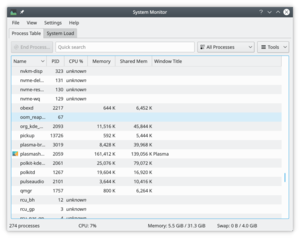 |
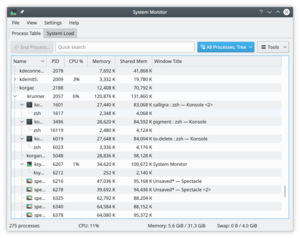 |
Hints and Tips
Ctrl + Esc brings up the Processes part of KSysGuard, which is very helpful when you are trying to find which application is using too many resources.
In KRunner (Alt + F2 or right click on the desktop and select ) there is a tiny icon to the left of the entry bar - it looks like a microwave oven - that also brings up the Process Table.
